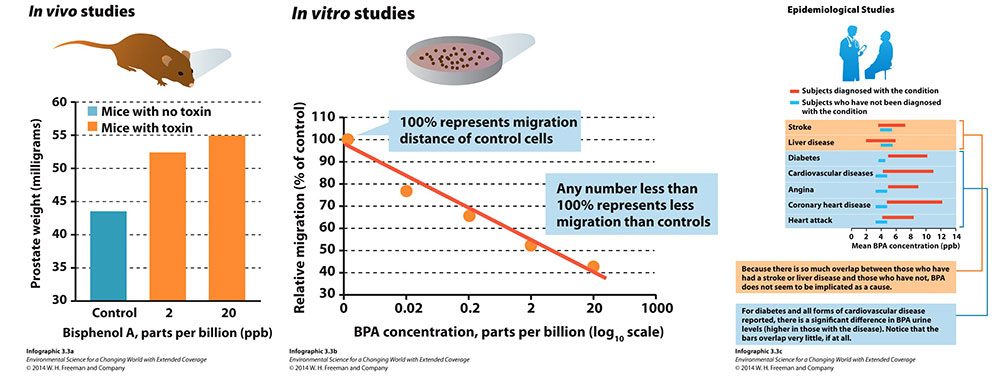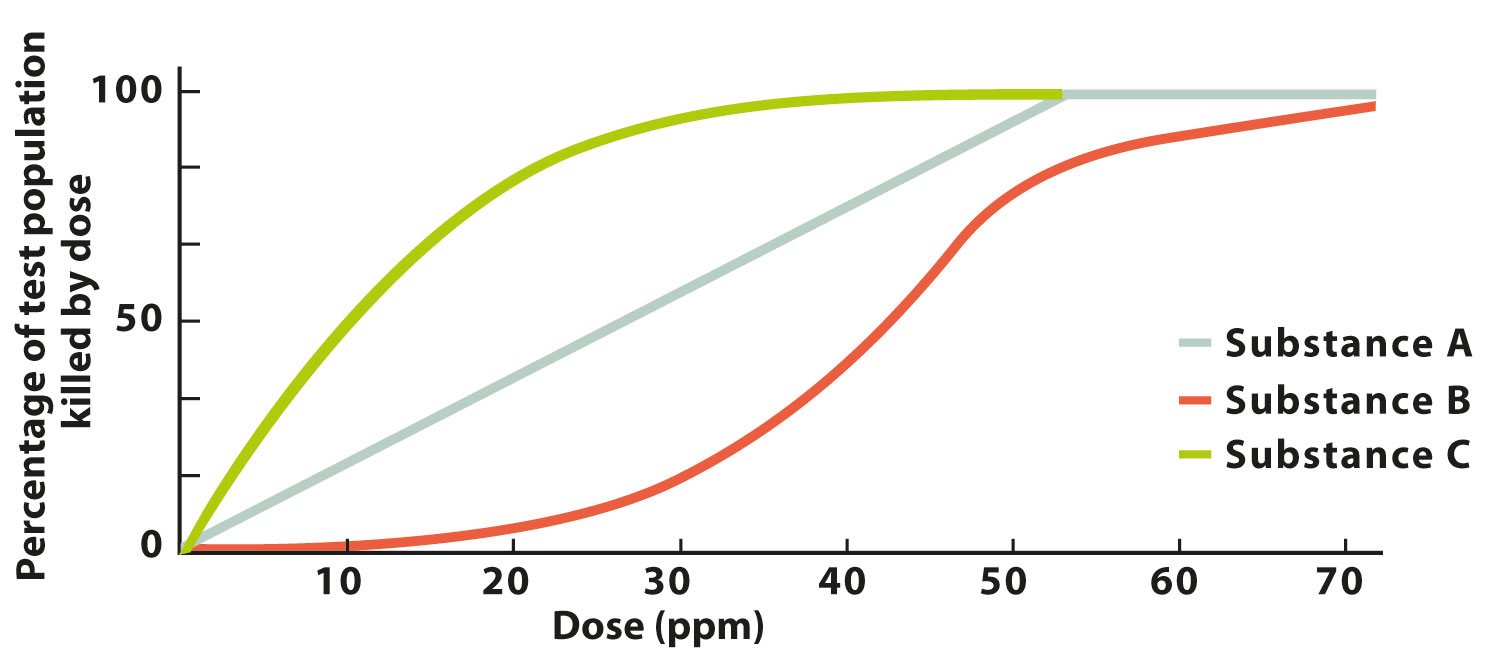
Chapter 3. Chapter 3: Information Literacy
What kind of scientific studies allow us to assess...

Guiding Question 3.4
What kind of scientific studies allow us to assess the potential hazard of a particular chemical? How do we determine “safe” exposures?
Why You Should Care
Determining the safety or danger of a chemical is very challenging. Most chemicals are not lethal at first touch but can accumulate in the body over long periods of time and cause a variety of illnesses with different levels of symptoms. Any research into a chemical’s toxicity will involve studies of the chemical in controlled conditions in cells in the lab (in vitro studies), in animals (in vivo studies), and in humans exposed to the chemical outside the lab.
These studies will reveal different impacts—some minor and maybe some major—of the chemicals on cells, animals, and humans. Toxicologists measure levels where the majority of the study’s populations (cells or animals) die after exposure (this is the LD50 value), review these studies, and conclude the levels that are considered “safe” for exposure to the chemicals.
Determining safe levels of a new chemical is more than the LD50 value. “Safe” has to also account for differences between people’s sensitivity to the chemical, people’s short-term and long-term exposure, and possible interactions that haven’t been discovered yet.
Test Your Vocabulary
Choose the correct term for each of the following definitions:
| Term | Definition |
|---|---|
| Research that studies the effects of experimental treatment cells in culture dishes rather than in intact organisms. | |
| A scientist who studies the cause and patterns of disease in human populations. | |
| Scientists who study the specific properties of any given potential toxin. | |
| Research that studies the effects of an experimental treatment in intact organisms. |

Question Sequence
1.
Please examine Infographic 3.3 closely to answer the following questions:
For the in vivo studies on the mice:
A) How much more did the BPA-exposed mice's prostate glands weigh compared to the control mice?
B) What did the researchers believe the BPA was doing in the mice? Did they know this for sure? What did they propose doing in further research on mice?
B) In mice, it is believed, but not known, that BPA was acting to increase the size or number of prostate cells to make them larger and heavier. More research was needed to clarify exactly how this was happening by examining prostates’ DNA to discover what reactions were occurring.
2.
For the in vitro studies on the mice:
A) Which moved farthest: rat neural cells exposed to higher or lower levels of BPA?
B) What effect would lower migration have on rats’ brains developing?
C) What would further research look into with rats?
B) Movement of neural cells helps the brain to develop; less migration leads to less development and lower levels of brain function.
C) Further research would look into the specifics of what BPA does to overall brain function both in younger and older rats. Younger rats’ brains may be modified to have lower mental function, but older rats’ brains may also be impacted by less movement with more age-related issues such as Alzheimer’s disease.
3.
For the studies on humans:
A) Were these in vivo or in vitro studies?
B) For strokes and/or liver disease, were BPA levels linked to the disease? If so, could BPA be linked as the cause? Explain.
C) For diabetes and heart conditions, does BPA show up at lower or higher levels if you have the disease?
B) For strokes and liver disease, BPA levels overlap for those who have the disease at the same concentration as those who do not have the disease. Since there is no clear pattern of difference, BPA does not have an effect on strokes and liver disease.
B) For strokes and liver disease, BPA levels overlap for those who have the disease at the same concentration as those who do not have the disease. Since there is no clear pattern of difference, BPA does not have an effect on strokes and liver disease.
Question Sequence
4.
Fill in the blank with the correc term for each of the following definitions:
: A graph of the effects of a substance at different concentrations or levels of exposures.
The dose of a substance that would kill 50% of the test population is called .
5.

The graph above shows the LD50 curves for three substances that are in clinical trials.
Which substance has the lowest dosage for LD 50?
| A. |
| B. |
| C. |
| D. |
What is the LD50 dose for Substance A?
| A. |
| B. |
| C. |
| D. |
Which drug is the safest at lower doses?
| A. |
| B. |
| C. |
| D. |
Using the "safe dose" guideline for Infographic 3.5, what would you propose the safe dose levels be for Substances A, B, and C?
| A. |
| B. |
| C. |
| D. |
Activity results are being submitted...